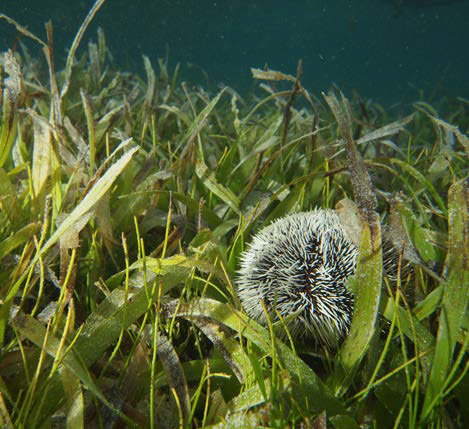An Invasive Algae Subject Of A Thesis
Kimani Kitson-Walters, on the staff at the Caribbean Netherlands Science Institute (CNSI), has published a thesis on the arrival of Halophila stipulacea, a species of exotic, invasive algae that comes from the Red Sea, and which arrived in the Caribbean Sea during 2022. To write his thesis, titled “The loss of biodiversity loss in Caribbean seagrass ecosystems may be exacerbated by invasive algae”, the scientist requested the support of Réserve Naturelle in studying the native sea beds at Grand-Case and Orient Bay, rare sites where the sea beds are in good health, and are composed of Thalassia testidinum and Syringodium filiforme, but lack Halophila stipulacea. At the same time, Thalassia, which is known as “turtle grass,” favors the development of diverse and numerous fauna, but is giving way little by little to the invasive Halophila. Shorter and with shallower roots, Halophila grows more quickly than the native seagrass. It also is less nutritional for herbivore species and its shorter height is not good for the fauna that like to hide there. On March 29, 2022, Kimani Kitson-Walters had the help of the Réserve to carry out his study.

















